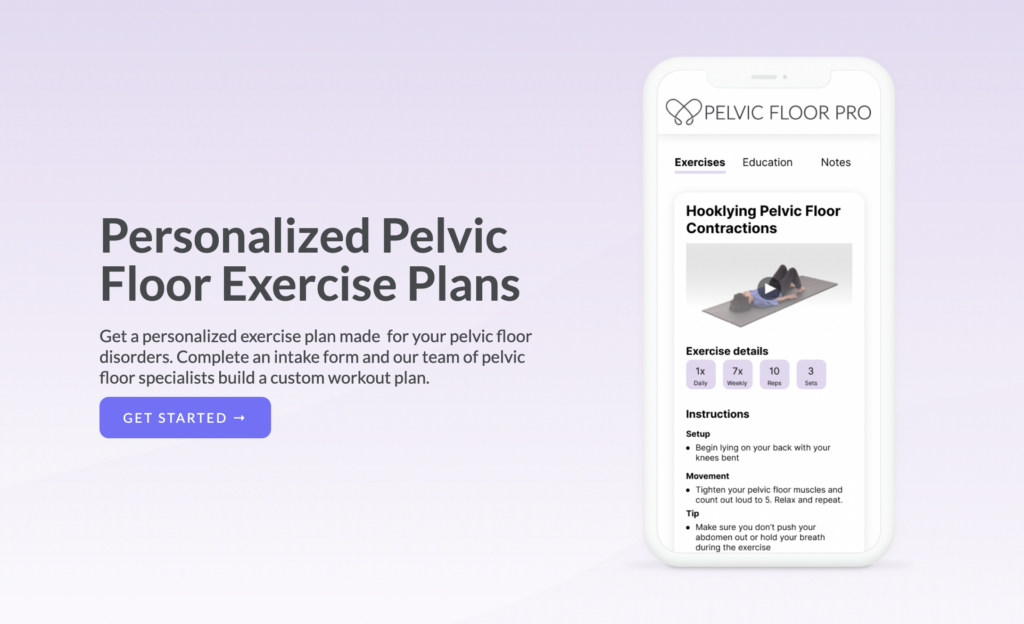Caffeine and Pelvic Floor Dysfunction
For some people, their day must start with a cup of coffee. Caffeine is a stimulant, b but most people do not know the extent of caffeine’s effects on their bodies, especially women.
Did you know that caffeine can also cause pelvic floor dysfunction? A recent study published in the journal “Pelvic Floor Dysfunction” found a strong correlation between caffeine intake and pelvic floor problems. The study looked at data from over 2,500 women who reported on their daily caffeine consumption, as well as symptoms of pelvic floor dysfunction such as urinary incontinence and pelvic organ prolapse.
The findings were quite clear: caffeine can contribute to bladder leakage and other pelvic floor problems. A caffeinated beverage causes the kidneys to overwork as a diuretic and makes more urine than normal. This overuse can cause sensitivity in the bladder and, in turn, weaken the pelvic floor muscles.
So if you’re struggling with pelvic floor dysfunction (PFD), it might be time to cut back on the caffeine. Replace that morning serving of coffee with a glass of water or herbal tea. In this blog, we delve more into this discussion of pelvic floor dysfunction and how you can remedy this problem.
Related Articles
Get Personalized Therapy for Your Pelvic Floor Dysfunction
Improve pelvic floor dysfunction symptoms in only 2 – 3 months from home.
With targeted exercise alone most women can improve their pelvic floor function in 60 to 90 days. Generic exercises won’t get these outcomes, only personalized plans based on your symptoms. This is why intake forms and professional plans are so important.
Learn more with the button below.
What Every Woman Should Know About Pelvic Floor Disorder
Pelvic Floor Anatomy
Pelvic floor muscles (PFM) are both superficial and deep lavatory ani muscles and ligaments that support the bowel, bladder, and uterus. The pelvic floor muscle stretches from the tailbone to the pelvic bone, helping cushion and keep the rectum, urethra, bladder, and uterus in place.
The pelvic floor muscles provide three major functions:
- Bladder and bowel control
- Pelvic organ support
- Sexual function
PFM muscles need to relax to urinate and defecate, while continence and sexual function call for them to maintain a sustained resting tone and quick contractions. It is imperative to have a strong and healthy pelvic floor for the proper day-to-day bodily functioning of the woman.
What is a Pelvic Floor Disorder?
A pelvic floor disorder is defined as the inability to control and coordinate the pelvic floor muscles. This happens when pelvic area muscles and/or connective tissues weaken or are injured. According to statistics, one in every three women experiences a pelvic floor disorder in her lifetime.
Changes in the strength or function of these muscles may contribute to pelvic floor dysfunctions. Symptoms of PFD include pelvic organ prolapse, fecal incontinence, bladder control problems, pain during intercourse, painful urination, constipation, constant need to use the bathroom, lower back pain, and pelvic region pain (anus, genitals, lower abdomen).
What Causes Pelvic Floor Dysfunction?
Some of the potential causes of pelvic floor disorder include:
- Childbirth
- Overweight
- Growing older
- Excessive coughing
- Persistent heavy lifting
- Traumatic injury to the pelvic area
- Constipation
- Hormonal level changes at menopause
- Pelvic surgery
- Tobacco use
- Overuse of pelvic muscles (pushing too hard or going to the bathroom too often)
How Do You Fix a PFD?
There are surgical and non-surgical solutions for PFD. Women, therefore, do not need to suffer in silence. A trained Urogynecologist can assess their situation and determine the treatment plan that will work for their individual needs. Solutions to PFD include:
- Pelvic floor physical therapy
- Medications
- Bladder Botox
- Nerve stimulation
- Pessaries and other vaginal supports
- Surgery
- Other innovative strategies.
Physical Therapy as a Solution to Pelvic Floor Dysfunction
Fortunately, PFD is treatable. Pelvic floor physical therapy is one of the most common forms of PFD treatment. The therapist determines which muscles in your pelvis, lower back, and pelvic floor need to be worked on, then teaches you how to exercise them so you can improve their coordination. Physical therapy’s goal is to improve the strength and function of PFM and alleviate weakness, pain, and dysfunction of the muscles.
The procedure entails having a skilled therapist assess your pelvic muscles through the vagina or rectum, then make manipulations on them to strengthen them. The therapist either applies resistance where the muscles are weak and dysfunctional to strengthen them or stretches the short and contracted muscles. This internal technique may not appeal to most people as it may sound unusual and invasive, but it is very effective.
The other approach is external treatment, and the techniques include nerve release, deep tissue massage, trigger point therapy, skin rolling, and joint mobilization. Physical therapy can relieve pain and discomfort in women, especially those who feel pain during sex. Some exercises can also help you become more aware of your muscles for better orgasms.
When is Pelvic Floor Physical Therapy Recommended?
Pelvic physical therapy targets ligaments, muscles, and connective tissues in the pelvic floor area to coordinate and work together to support the pelvic organs. These tissues also assist in bladder and bowel control contribute to sexual arousal and orgasm. When these don’t work as they should, and you are experiencing pain and symptoms, physical therapy is recommended as early as possible.
You know it is time to see a pelvic floor therapist if you have incontinence, painful intercourse, endometriosis, vaginismus, chronic pelvic pain, difficulty with urination, and bowel movement.
Pelvic Floor Physical Therapy Techniques and Exercises
Kegels
These popular exercises help strengthen the PFM by alternating contractions, relaxations, and breathing. Kegels are great for relieving incontinence and pain during sex as they are designed to strengthen weak muscles, stretch tight muscles, and boost flexibility. You need to identify the right muscles to work on to get started. The way to do this is by stopping urination midstream. Once you place the muscles, contract them and hold them for five seconds, then release them for another five. Do about ten reps of these daily, three times a day.
You can retrain and strengthen the pelvic floor muscles regardless of age or gender. It is recommended that women exercise their PFM daily throughout their life. This will not only improve strength but also prevent weakness. Exercising weak PFM can strengthen them and work effectively over time. In fact, if you are consistent with the workouts, you will begin to see changes in just two weeks. These exercises are called Kegels.
Biofeedback
This technique entails the use of devices to check your pelvic floor contractions. PTs use biofeedback to check how well the exercises are going. They place electrodes between the vagina and the anus or use an internal probe to help measure tension and relaxation of the pelvic floor muscles. The results are then displayed on a computer screen for analysis.
Electrical Stimulation
This is a technique that the PT can perform in their office or teach you how to do it at home. The technique uses special equipment to help reduce muscle spasms and pelvic pain.
Endnote
Keep in mind that a pelvic floor disorder is not likely to resolve independently. It would be best to take action once you notice the symptoms or risk suffering some long-term issues like incomplete bladder emptying, chronic pelvic pain, and ultimately kidney damage. Always discuss any issues you have with the pelvic area or any other problems with the physician. Our qualified therapists offers reliable assessment and treatment determination within a short time. When you feel you need that professional touch, get to us for free enquiry.



